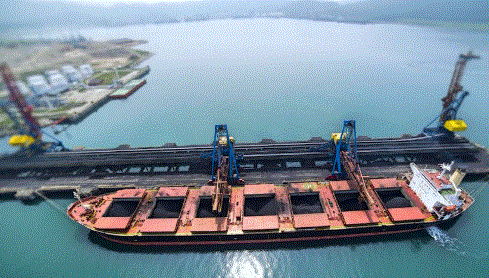Capesize freight rates continued to be under pressure, following the thin activities in the physical market.
The Capesize 5 time charter average dropped by $1,836 day-on-day to $25,497 on Tuesday, despite some market talks of another rally in Q4 as miners accelerated their ore exports by year-end.
Due to the declining freight rates, the Baltic Dry Index (BDI) then fell by 75 points or 4.15% day-on-day to the readings of 1,732.
Mixed market outlook for freight rates
The market talk of the ban on Australian coal shipments had dampened Capesize demand, while some trade participants thought that it might improve ton-mile demand as many Capesize Australian coal carriers were stuck in Chinese discharging ports.
In the meantime, there was still decent cargo demand in the Pacific market, with a few fixtures done by major miners like Rio Tinto, BHP and FMG for the west Australia to China route for end October laycans at low $9s/wmt level.
On the contrary, there was scant activity in the Atlantic market due to a standoff between shipowners and charterers. Thus, the indicative freight for the Brazil to China route was heard at the $18.50-$19.50/wmt range.
VLSFO prices rise on good oil import data from China
VLSFO prices rebounded by $1/mt to $344/mt in the port of Singapore from previous losses, due to good bunker sales in the city-state and good oil import data from China.
In September, Singapore’s bunker sales recorded 4.22 million mt, up 8.18% year-on-year, based on the date from the Maritime and Port Authority of Singapore.
Meanwhile, China imported a total of 11.8 million barrels per day (bpd) of oil in September, up 5.5% month-on-month and up 17.5% on yearly basis, according to customs data.
In the meantime, the bunker sales of Chinese port of Zhoushan had reached double-digit rise in first nine month of year to 3.26 million mt of bonded marine fuel, up 18% year-on-year.
